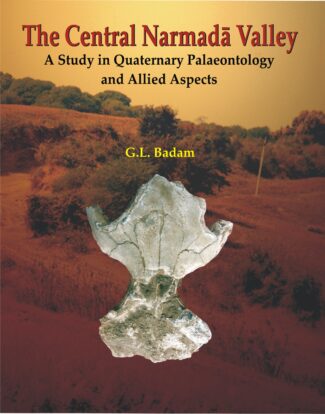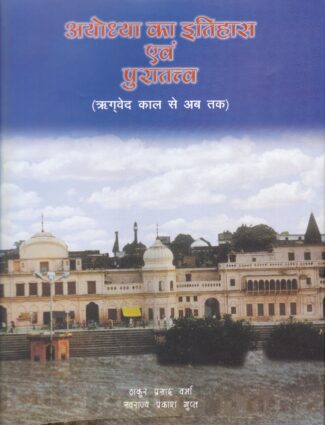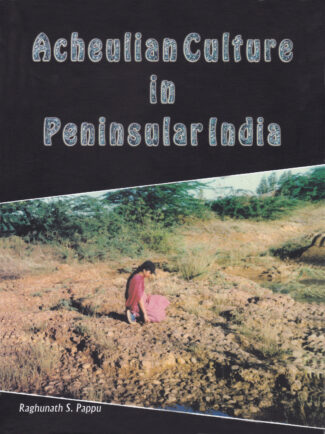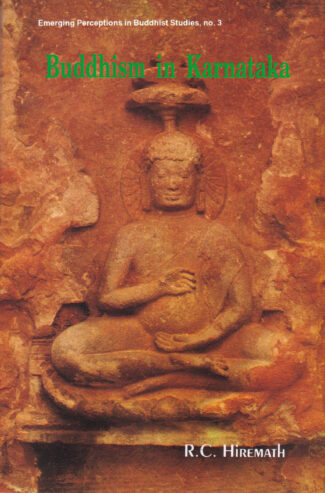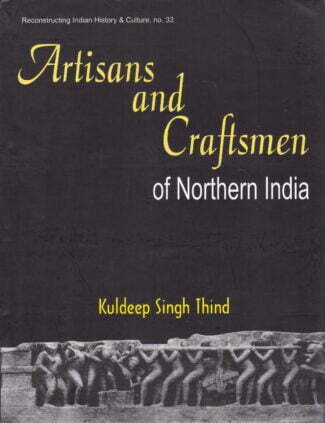

Harappan Necropolis ...
Harappan Necropolis at Farmana in the Ghaggar Basin
by: Vasant Shinde , Toshiki Osada , Akinori Uesugi , Manmohan KumarThis book unfolds the unknown aspects of the Harappan civilization. It throws light on Harappan people’s composition, movement, dietrary habits and burials; and also on the study of human skeletal remains.
₹1,000.00 Original price was: ₹1,000.00.₹900.00Current price is: ₹900.00.
ISBN: 9788124608494
Year Of Publication: 2009
Edition: 1st
Pages : 103
Language : English
Binding : Paperback
Publisher: Indian Archaeological Society
Size: 28 cm.
Weight: 450
This book unfolds the unknown aspects of the Harappan civilization. It throws light on Harappan people’s composition, movement, dietrary habits and burials; and also on the study of human skeletal remains.
- Sale!Central Narmada Valley by: G.L. Badam
₹1,600.00Original price was: ₹1,600.00.₹1,440.00Current price is: ₹1,440.00.The book The Central Narmada Valley: A Study in Quaternary Palaeontology and Allied Aspects is the first attempt at studying a small stretch of the valley from a multidisciplinary point of view incorporating the results of archaeology, geology, palaeontology and taphonomy. New techniques and parameters have been applied to study and re-interpret these areas. This book also summarizes the morphology, distribution pattern and evolutionary history of certain extinct animals in relation to cultural development. With the help of modern analogies, the book attempts to build up a palaeoecological model for Narmada and its surrounding areas including some of the rock shelter sites. The book extends the dimensions of understanding the life history of Narmada and its tributaries, not only by discovering and reinterpreting various biological and cultural events, but also by seeking to understand varied aspects like river behaviour, flood history and man-land relationship during the past. The book should prove useful to students and researchers of river valley cultures in general and to those of Narmada Valley in particular.
- Sale!Ayodhya ka itihasa evam puratattva Rgveda kala se aba taka by: Thakur Prasad Verma, S.P. Gupta,
₹1,100.00Original price was: ₹1,100.00.₹990.00Current price is: ₹990.00.T.P. Verma and S.P. Gupta, after several years toil, have here presented the history of Ayodhaya in a chronological form from Rgveda times till today which has been proved with the evidences from archaeology, coinages, scriptures, etc.
- Sale!Acheulian Culture in Peninsular India by: Raghunath S. Pappu
₹455.00Original price was: ₹455.00.₹410.00Current price is: ₹410.00.The Indian sub-continent, particularly the Peninsular India, is recognised as one of the richest areas of Acheulian occupation in the Old World. This research work is a detailed study of the Acheulian Culture system in India signifying the earliest cultural occupation here. The book examines the cultural material of the Acheulian phase in its ecological setting to throw light on the distribution pattern, nature of habitats, Quaternary deposits, mammalian and hominid remains, land use and subsistence, site formation process, genesis and chronology of the Acheulian cultural system. Incorporating his own field observations over the last three decades and more as well as integrating and synthesising the available data and evidence on Acheulian culture, Dr. R.S. Pappu presents a comprehensive understanding of the Acheulian system and, in general, behavioural patterns of early hunting and food gathering communities. He also provides an account of the progress of Palaeolithic research in India since the first discovery of Palaeolithic settlement by Foote in 1863, tracing the major projects and contributions of noted Indian geo-archaeologists.
- Sale!Buddhism in Karnataka by: R.C. Hiremath
₹275.00Original price was: ₹275.00.₹248.00Current price is: ₹248.00.Dr. R.C. Hiremath examines the age-old story of Siddhartha Gautamas early life and renunciation, providing the reader with the background of the Shramana schools that did not accept the authority of the Vedas. He treats, with meticulous scholarship, the Hinayana and Mahayana forms of Buddhism, and establishes that, contrary to popular belief, these two forms were not antagonistic to each other. The author maintains that Buddhism had in fact entered Karnataka before the time of the Emperor Ashoka, and that it enjoyed its heyday between the third century BC. and the third century AD. He describes the organisation of the centres, assesses the standing of Buddhism as a living important religion of Karnataka, and accounts for its decay and departure to countries outside the land of its birth. He discusses the impact of the religion on the literature of Karnataka, of which little, that is authentic, is yet known. Based on the Ashokan edicts found in the region, which are claimed to have been the first writings in Karnataka, Dr. Hiremath goes further to infer that the Kannada script and literature have been derived from Buddhistic literature and philosophy. Supported with reports of archaeological excavations and foreign travellers, the study gives a fresh insight on an hitherto untapped area. With highly informative appendix giving Devanagari text, Roman transliteration and translation of the inscriptions found in Karnataka, extensive bibliographic references, and a glossary of non-English words/phrases, the book holds out an enduring appeal to both scholars and discerning readers.
- Sale!Artisans and Craftsmen of Northern India by: Kuldeep Singh Thind
₹1,100.00Original price was: ₹1,100.00.₹990.00Current price is: ₹990.00.The basic aim of the book is to expose the major contributions of artisans and craftsmen in portraying the society in different perspectives. These artisans and craftsmen, were drawn mostly from the shudras, lower caste of the community, suppressed and have-nots section of the society, but were highly talented. The work is also designed to create interest among the reader and scholars alike, to understand the society of the period under reference through the immortal art of these creative people. The artisans such as potters, weavers, carpenters, architects, sculptors, brick-makers, metallurgy and metal workers, leather workers, painters, and the workers engaged in the profession of ivory, glass and mirror, perfume and cosmetic, musical instrument, oil, salt and liquor makers, etc. were the heroes of that time, who not only met the day-to-day requirement of the then society, but also portrayed different aspects of their life, in its true color, through their workmanship. It was the architect who designed and constructed houses to live in, as well as water tank, well and channel, royal building, stupa, temple and fort, bridge, pillar and rock-edict etc., which met the need of the society.
Today, we feel proud of the rich heritage of old Indian art and architecture, credit for which solely goes to the then artisan who crafted immortal creations. However, the invaluable contribution made by the historians in immortalizing their creations, by putting them in black and white, is no less important. It is the historian, whose mighty pen has immortalized not only Ashoka the great, as a king but also the creators of the stupas of his times on equal footings. It is with this aim in view that the present book has been presented to the posterity, in order to pay rich tributes to the creators of our rich cultural heritage.
Unluckly there was no proper institutionalized provision for the education of artisans and craftsmen, so generally the former adopted the occupation of their parents and hereditary skill was enhances as it was transferred from father to son, and generation to generation. Contemporary sources reveal that the social stautus of artisan class was based on the nature and economic conditions of a particular profession.



